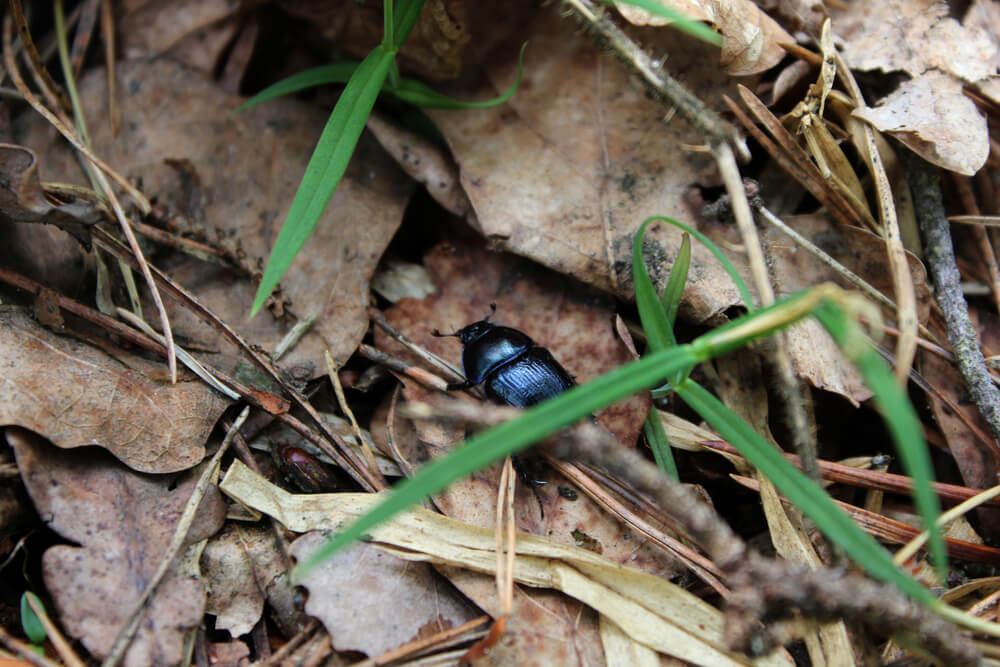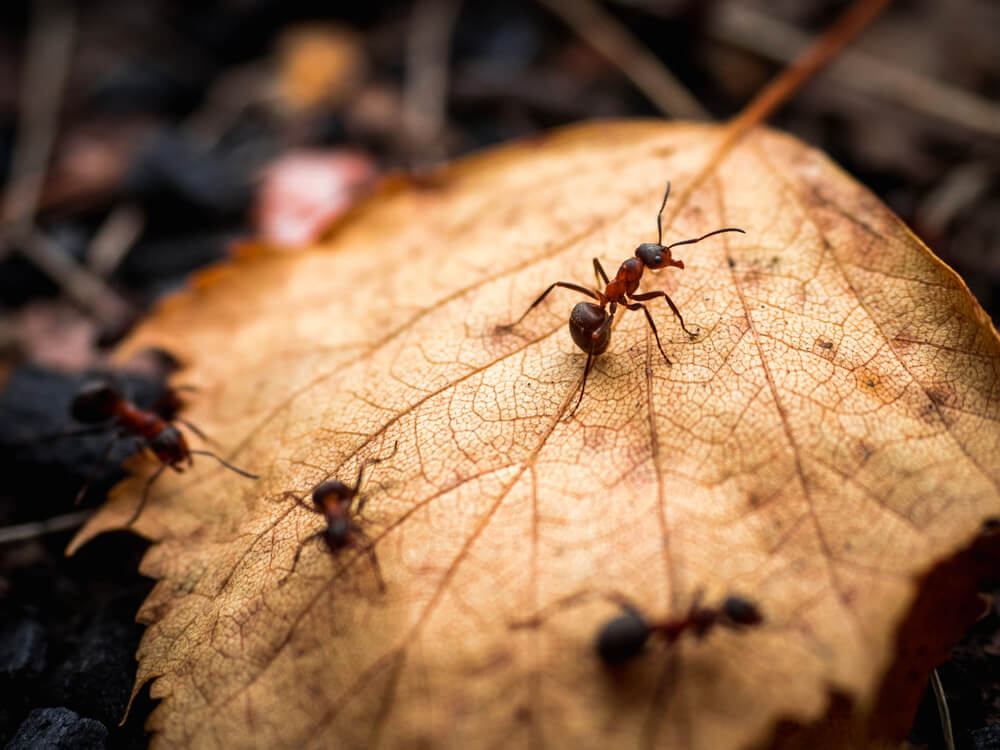If you’ve read virtually any of our other pest prevention blogs, you’ll start noticing patterns. Foremost among these: we’re talking about basement pests constantly. It seems like no matter what kind of pest you end up with, it’s hanging out down in your basement. But why is that? What is it about basements that make them such havens for creepy crawlies of all varieties?
A lot of different things attract pests to a home, and the more boxes a particular space can check off at once, the more attractive it’ll be. It just so happens that basements are a kind of “perfect storm” of pest-positive amenities. Here are four of the biggest reasons why:
Ease of Access
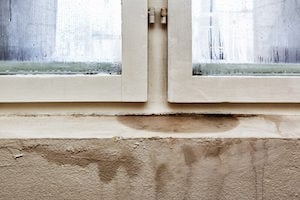 We’ll start with the obvious: basements are underground. That means crawling and digging insects can access it far easier than most parts of a home. Many of the most common access points pests use to infiltrate homes happen to lead to basements, too. Gaps around utility lines, cracks in the foundation or flooring, holes in insulation, and openings around ground-level windows all provide great opportunities for pests looking for a place to stay.
Basements can be so easy to access that many pests accidentally find their way in! Mice and rats
We’ll start with the obvious: basements are underground. That means crawling and digging insects can access it far easier than most parts of a home. Many of the most common access points pests use to infiltrate homes happen to lead to basements, too. Gaps around utility lines, cracks in the foundation or flooring, holes in insulation, and openings around ground-level windows all provide great opportunities for pests looking for a place to stay.
Basements can be so easy to access that many pests accidentally find their way in! Mice and rats like the smell of gas, and might follow a gas utility line into your home. Boxelder bugs and other temperature-sensitive critters may find
cracks in the weatherproofing while they’re soaking up sunbeams on windows. Digging pests like carpenter ants or termites can happen upon exposed wood near the foundation or past damaged insulation while they’re rooting around your yard. Taking simple pest-proofing steps in your basement goes a long way toward making it a pest-free zone.
Darkness
 For pests, shyness is a survival mechanism. They depend on hiding places to stay safe from predators and other pests they compete with for food and mating. Most pests will do whatever they can to avoid open exposure, especially if they’re laying eggs or mating. The natural darkness basements provide help pests feel more comfortable moving around to hunt for food and mate. The fact that basements are traditionally among the least-busy parts of a home is a nice bonus, too.
Pests are especially attracted to cluttered basements, where they can build their nests in relative cover and permanent darkness. Dark basements filled with boxes, bags, old furniture, and other knick-knacks provide a great environment for pests looking to raise a family. Predatory pests like spiders follow their prey wherever they go. Where one pest comes to stay, others will inevitably follow. If you can keep your basement clear of clutter and adequately lit, it will cease to be the convenient hiding place pests look for.
For pests, shyness is a survival mechanism. They depend on hiding places to stay safe from predators and other pests they compete with for food and mating. Most pests will do whatever they can to avoid open exposure, especially if they’re laying eggs or mating. The natural darkness basements provide help pests feel more comfortable moving around to hunt for food and mate. The fact that basements are traditionally among the least-busy parts of a home is a nice bonus, too.
Pests are especially attracted to cluttered basements, where they can build their nests in relative cover and permanent darkness. Dark basements filled with boxes, bags, old furniture, and other knick-knacks provide a great environment for pests looking to raise a family. Predatory pests like spiders follow their prey wherever they go. Where one pest comes to stay, others will inevitably follow. If you can keep your basement clear of clutter and adequately lit, it will cease to be the convenient hiding place pests look for.
Moisture
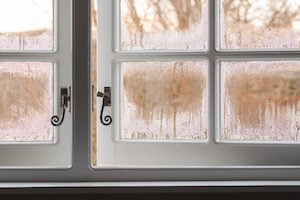 All living things need water to survive, and pests are no exception. Bugs and rodents don’t require much, but they need find it like everything else. It’s not as obvious as access or darkness, but basements tend to produce more moisture than other parts of the house. It’s usually cooler, darker, and drafty. All that adds up to increased humidity.
Humidity can generate condensation on glass and plumbing pipes, especially if your windows aren’t weatherproofed or if your pipes aren’t insulated. Even the slightest layer of condensation on exposed metal or windows provides more than enough water for a desperate pest. Humidity helps keep pests lubricated, too, so even if your basement doesn’t generate condensation it might attract pests. Most plumbing leaks originate in basements, as well, and the resulting displaced water can sustain a surprising number of pests. Drying out your basement will deprive pests of yet another reason to move in.
All living things need water to survive, and pests are no exception. Bugs and rodents don’t require much, but they need find it like everything else. It’s not as obvious as access or darkness, but basements tend to produce more moisture than other parts of the house. It’s usually cooler, darker, and drafty. All that adds up to increased humidity.
Humidity can generate condensation on glass and plumbing pipes, especially if your windows aren’t weatherproofed or if your pipes aren’t insulated. Even the slightest layer of condensation on exposed metal or windows provides more than enough water for a desperate pest. Humidity helps keep pests lubricated, too, so even if your basement doesn’t generate condensation it might attract pests. Most plumbing leaks originate in basements, as well, and the resulting displaced water can sustain a surprising number of pests. Drying out your basement will deprive pests of yet another reason to move in.
Warmth
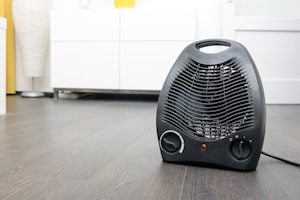 We know we just said basements are cooler than most parts of the house, and that’s true. Even if it feels cool to you, however, it probably feels quite a bit warmer than the outdoors. Drafts happen when cold air from outside sucks warm, indoor air out through a crack or gap in your walls or window sealing. You feel the rush of cool air as it displaces the warm air it sucked out. If you found the draft outside, however, you would actually feel the warm air as it rushed away.
Outdoor pests do feel that draft, and they follow it straight to the source. The real reason most pests want to get inside is to stay out of the winter cold. That means they chase down warmth like their lives depend on it. If your home’s siding, windows, or foundation lets any heat leak out, you can bet pests will find it. Necessity is the mother of invention, after all.
When it comes right down to it, pests are actually very simple. That means pest-proofing your basement is actually really simple, too. Like all other animals, they’re just trying to survive, eat, and reproduce. Basements attract pests when they seem like a good place to do those things. If you can convince your pests that it’s not, then they’ll pack up and look for some other place to shack up.
Need some help with your pest-proofing this fall? Worried about all the autumn pests that are aggressively seeking shelter right now? Give Plunkett’s a call today. We’ll help make sure your basement stays a pest-free zone all winter long.
We know we just said basements are cooler than most parts of the house, and that’s true. Even if it feels cool to you, however, it probably feels quite a bit warmer than the outdoors. Drafts happen when cold air from outside sucks warm, indoor air out through a crack or gap in your walls or window sealing. You feel the rush of cool air as it displaces the warm air it sucked out. If you found the draft outside, however, you would actually feel the warm air as it rushed away.
Outdoor pests do feel that draft, and they follow it straight to the source. The real reason most pests want to get inside is to stay out of the winter cold. That means they chase down warmth like their lives depend on it. If your home’s siding, windows, or foundation lets any heat leak out, you can bet pests will find it. Necessity is the mother of invention, after all.
When it comes right down to it, pests are actually very simple. That means pest-proofing your basement is actually really simple, too. Like all other animals, they’re just trying to survive, eat, and reproduce. Basements attract pests when they seem like a good place to do those things. If you can convince your pests that it’s not, then they’ll pack up and look for some other place to shack up.
Need some help with your pest-proofing this fall? Worried about all the autumn pests that are aggressively seeking shelter right now? Give Plunkett’s a call today. We’ll help make sure your basement stays a pest-free zone all winter long.
 We’ll start with the obvious: basements are underground. That means crawling and digging insects can access it far easier than most parts of a home. Many of the most common access points pests use to infiltrate homes happen to lead to basements, too. Gaps around utility lines, cracks in the foundation or flooring, holes in insulation, and openings around ground-level windows all provide great opportunities for pests looking for a place to stay.
Basements can be so easy to access that many pests accidentally find their way in! Mice and rats like the smell of gas, and might follow a gas utility line into your home. Boxelder bugs and other temperature-sensitive critters may find cracks in the weatherproofing while they’re soaking up sunbeams on windows. Digging pests like carpenter ants or termites can happen upon exposed wood near the foundation or past damaged insulation while they’re rooting around your yard. Taking simple pest-proofing steps in your basement goes a long way toward making it a pest-free zone.
We’ll start with the obvious: basements are underground. That means crawling and digging insects can access it far easier than most parts of a home. Many of the most common access points pests use to infiltrate homes happen to lead to basements, too. Gaps around utility lines, cracks in the foundation or flooring, holes in insulation, and openings around ground-level windows all provide great opportunities for pests looking for a place to stay.
Basements can be so easy to access that many pests accidentally find their way in! Mice and rats like the smell of gas, and might follow a gas utility line into your home. Boxelder bugs and other temperature-sensitive critters may find cracks in the weatherproofing while they’re soaking up sunbeams on windows. Digging pests like carpenter ants or termites can happen upon exposed wood near the foundation or past damaged insulation while they’re rooting around your yard. Taking simple pest-proofing steps in your basement goes a long way toward making it a pest-free zone.
 For pests, shyness is a survival mechanism. They depend on hiding places to stay safe from predators and other pests they compete with for food and mating. Most pests will do whatever they can to avoid open exposure, especially if they’re laying eggs or mating. The natural darkness basements provide help pests feel more comfortable moving around to hunt for food and mate. The fact that basements are traditionally among the least-busy parts of a home is a nice bonus, too.
Pests are especially attracted to cluttered basements, where they can build their nests in relative cover and permanent darkness. Dark basements filled with boxes, bags, old furniture, and other knick-knacks provide a great environment for pests looking to raise a family. Predatory pests like spiders follow their prey wherever they go. Where one pest comes to stay, others will inevitably follow. If you can keep your basement clear of clutter and adequately lit, it will cease to be the convenient hiding place pests look for.
For pests, shyness is a survival mechanism. They depend on hiding places to stay safe from predators and other pests they compete with for food and mating. Most pests will do whatever they can to avoid open exposure, especially if they’re laying eggs or mating. The natural darkness basements provide help pests feel more comfortable moving around to hunt for food and mate. The fact that basements are traditionally among the least-busy parts of a home is a nice bonus, too.
Pests are especially attracted to cluttered basements, where they can build their nests in relative cover and permanent darkness. Dark basements filled with boxes, bags, old furniture, and other knick-knacks provide a great environment for pests looking to raise a family. Predatory pests like spiders follow their prey wherever they go. Where one pest comes to stay, others will inevitably follow. If you can keep your basement clear of clutter and adequately lit, it will cease to be the convenient hiding place pests look for.
 All living things need water to survive, and pests are no exception. Bugs and rodents don’t require much, but they need find it like everything else. It’s not as obvious as access or darkness, but basements tend to produce more moisture than other parts of the house. It’s usually cooler, darker, and drafty. All that adds up to increased humidity.
Humidity can generate condensation on glass and plumbing pipes, especially if your windows aren’t weatherproofed or if your pipes aren’t insulated. Even the slightest layer of condensation on exposed metal or windows provides more than enough water for a desperate pest. Humidity helps keep pests lubricated, too, so even if your basement doesn’t generate condensation it might attract pests. Most plumbing leaks originate in basements, as well, and the resulting displaced water can sustain a surprising number of pests. Drying out your basement will deprive pests of yet another reason to move in.
All living things need water to survive, and pests are no exception. Bugs and rodents don’t require much, but they need find it like everything else. It’s not as obvious as access or darkness, but basements tend to produce more moisture than other parts of the house. It’s usually cooler, darker, and drafty. All that adds up to increased humidity.
Humidity can generate condensation on glass and plumbing pipes, especially if your windows aren’t weatherproofed or if your pipes aren’t insulated. Even the slightest layer of condensation on exposed metal or windows provides more than enough water for a desperate pest. Humidity helps keep pests lubricated, too, so even if your basement doesn’t generate condensation it might attract pests. Most plumbing leaks originate in basements, as well, and the resulting displaced water can sustain a surprising number of pests. Drying out your basement will deprive pests of yet another reason to move in.
 We know we just said basements are cooler than most parts of the house, and that’s true. Even if it feels cool to you, however, it probably feels quite a bit warmer than the outdoors. Drafts happen when cold air from outside sucks warm, indoor air out through a crack or gap in your walls or window sealing. You feel the rush of cool air as it displaces the warm air it sucked out. If you found the draft outside, however, you would actually feel the warm air as it rushed away.
Outdoor pests do feel that draft, and they follow it straight to the source. The real reason most pests want to get inside is to stay out of the winter cold. That means they chase down warmth like their lives depend on it. If your home’s siding, windows, or foundation lets any heat leak out, you can bet pests will find it. Necessity is the mother of invention, after all.
When it comes right down to it, pests are actually very simple. That means pest-proofing your basement is actually really simple, too. Like all other animals, they’re just trying to survive, eat, and reproduce. Basements attract pests when they seem like a good place to do those things. If you can convince your pests that it’s not, then they’ll pack up and look for some other place to shack up.
Need some help with your pest-proofing this fall? Worried about all the autumn pests that are aggressively seeking shelter right now? Give Plunkett’s a call today. We’ll help make sure your basement stays a pest-free zone all winter long.
We know we just said basements are cooler than most parts of the house, and that’s true. Even if it feels cool to you, however, it probably feels quite a bit warmer than the outdoors. Drafts happen when cold air from outside sucks warm, indoor air out through a crack or gap in your walls or window sealing. You feel the rush of cool air as it displaces the warm air it sucked out. If you found the draft outside, however, you would actually feel the warm air as it rushed away.
Outdoor pests do feel that draft, and they follow it straight to the source. The real reason most pests want to get inside is to stay out of the winter cold. That means they chase down warmth like their lives depend on it. If your home’s siding, windows, or foundation lets any heat leak out, you can bet pests will find it. Necessity is the mother of invention, after all.
When it comes right down to it, pests are actually very simple. That means pest-proofing your basement is actually really simple, too. Like all other animals, they’re just trying to survive, eat, and reproduce. Basements attract pests when they seem like a good place to do those things. If you can convince your pests that it’s not, then they’ll pack up and look for some other place to shack up.
Need some help with your pest-proofing this fall? Worried about all the autumn pests that are aggressively seeking shelter right now? Give Plunkett’s a call today. We’ll help make sure your basement stays a pest-free zone all winter long.


